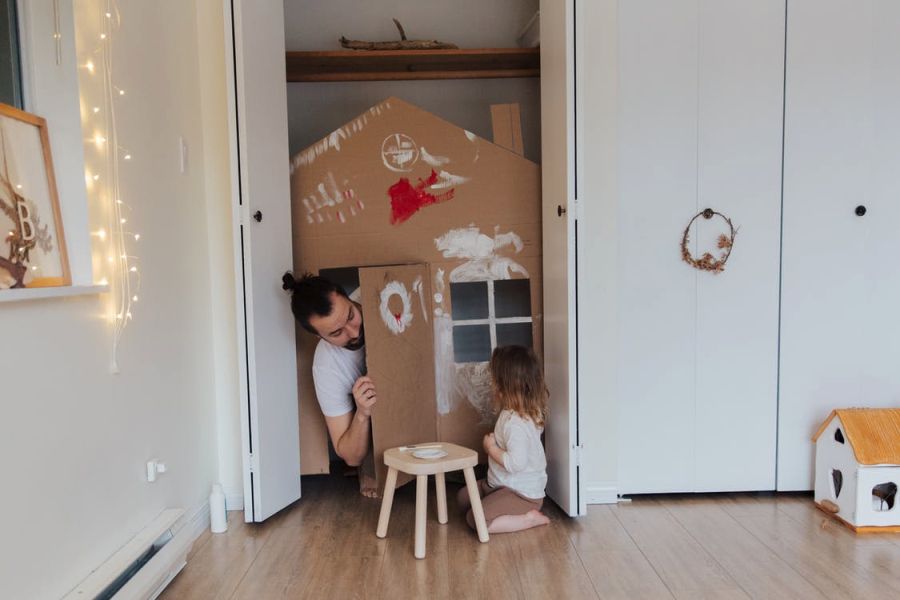Parenthood is a beautiful thing, but it can also be a little scary at times. The joy of bringing tiny humans into the world goes side by side with worrying about what kind of people they will grow into, more specifically, what kind of adults you are raising them to be.
So, while parents, and especially new parents, shower their kids with all the love and care in the world, they also naturally want to instill discipline and responsibility in their kids. And the best way to do that is to establish rules in the household. However, establishing rules is tricky with kids in general and toddlers in particular.
What Are Family Rules?
Family rules are those rules that parent/s set up in the home for everyone to follow. These rules ensure that kids and teenagers exhibit behavior that is acceptable by parents and which is not dangerous to the children or their siblings. Family rules aim to make kids well-behaved, kind, and responsible; they help establish a smooth routine in the house and make life easier.
Examples of family rules include imposing a curfew on teenagers, asking everyone to put away their mobiles at the dinner table, and having designated study hours every day.
The Importance of Family Rules
But are family rules really important? Isn’t it enough to have to deal with regulations in our workplaces, on the roads, and out in public? Isn’t home supposed to be the one place where we can relax and be ourselves, and wouldn’t having rules at home spoil that?
While it is true that having rules for kids also means that parents/adults have to hold themselves to a higher code of conduct, rules are the only way we can ensure our child grows up into a responsible and capable adult. Without restrictions, kids will grow into entitled, thankless, and impulsive adults who will have trouble setting into life and maintaining relationships. The world relies on rules to function, and we need our kids to be prepared for one day living on their own.
Deciding to set some house rules does not mean that life will become dull and unenjoyable. Rules do not have to be and should not be too harsh. Neither should they demand too high a standard from kids. Rather, rules should only be made about important things and should consider your kids’ ages.
Family Rules and Age of Child

Rules have to make sense, and as children become more and more sensible, they can take charge of more things, and the rules imposed on them should also reflect that.
How Do People Set Rules?
Have you ever noticed that the state sets specific rules for its citizens and that most of the population abides by those rules? The same is true for organizations, companies, and educational institutions. Most households also successfully enforce rules. There is a simple process involved in rule-setting in all of these situations, and it comprises three steps. As long as you adhere to these steps, you will get the desired results.
Step 1: Decide on a Rule and Punishment
In the first step to rule-setting, you have to decide what behavior is okay and what is not. Then, you have to decide on the consequences of not adhering to the rule. For example, you can make a rule that everyone has to go to bed at 9 pm. And in case the kids refuse to go to bed, you can take away their story-time.
Step 2: State and Explain the Rule
The second step is to clearly state the rule and the punishment for breaking the rule to your child. Then you should also explain why you made the rule in the first place. You might expect your children to respect and obey the rules you make for them just because you are the adult. However, children respond better to instructions when they understand the rationale behind them.
For example, when you could explain to your child that going to bed on time ensures they get a full night’s sleep and that they are fresh in the morning,
Step 3: Enforce the Rule Consistently
There is no use in stating and explaining a rule if you are not going to implement it actively. For small kids, you will need to turn off the television and accompany them to their room and watch over them as they brush their teeth and get ready for bed. If they refuse to settle in, you must not tell them their bedtime story. We know it can be hard to stick to your rules when your kid is acting all cute, but it is the only way they will learn to respect your word.
How Can You Set Rules for Your Toddler?

For toddlers, rules are simple and punishment light (often just a timeout or temporarily taking away a favorite toy). In fact, toddlers cannot follow a lot of rules. Hence, you can only set up a couple of short, clear directions that you will need to remind them of again and again since they often forget, or choose to ignore, what you tell them.
Also, with toddlers, you don’t really need to explain rules at length. They cannot understand much and do not care. Simply reinforcing a few rules will get you the best results.
Some General Rules for Toddlers
The most important rules for toddlers are safety rules. They can look like this:
Safety Rules
You can teach toddlers to stay away from certain dangerous objects or to not stand on furniture. You can also establish a ‘no hurting’ rule in the house, so your children don’t fight with each other. Though you will have to monitor them closely, having rules in place will slowly teach them to avoid unwanted behaviors.
Apart from safety rules, you can establish as many rules as your child can understand and remember. Most of your focus, however, should be on your monitoring and managing the child. This might be done in the following way:
- You should set up a consistent daily schedule for your toddler. Without a sleeping schedule in place, toddlers resist sleeping at night and are irritable throughout the day. Once kids settle into a daily routine, it is easier to get them to sleep on time, and their mood swings during the day are dramatically reduced.
- Set up a time limit for your toddler’s screen time. Kids will always cry and ask to watch videos on mobiles and laptops, but you need to be firm and only give them limited screen time.
- Lastly, as the parent or guardian, you will need to supervise your toddler constantly. Toddlers are too little to know their own good and can get in trouble anywhere. So, you will need to keep a close watch on your kid at all times.
Remember, You Are the Adult
Especially with toddlers, but generally, with kids, you need to remember that you are the adult in the equation. As such, the responsibility of maintaining peace and calm falls on your shoulders. Kids are bound to throw tantrums, have unending mood swings, bug you for hours on end just for a sweet, and are generally likely to want to break the rules. In any of these situations, you have to control your own emotions, remain cool, and use humor or playfulness to regain control of the situation.
If you find yourself giving in to kids at the end of a hectic day at work, that is fine, too, as long as it only happens once in a while. Parenting is a learning curve, and sooner or later, you will figure out how to set rules in a way that works for your kids.
Can You Let Go of Rules in Some Situations?
Rules should have some flexibility in them as well. For instance, you might allow your toddler more screen time when they are sick and cranky or when guests are at your place. They might be given extra sweets to eat when their sleep schedule has been upset because the family is traveling. Use your best judgment to decide when your kids deserve a reward for following rules and when you can relax some of the rules.
Conclusion
Rule-setting with toddlers involves constant effort from parents/guardians. Since the kids cannot regulate their behavior, it has to be done for them. From setting a daily schedule to monitoring their screen time to making sure they stay out of trouble, a lot of responsibility lies with the caretakers. However, toddlers can be taught short, simple rules with constant reinforcement and patience.

